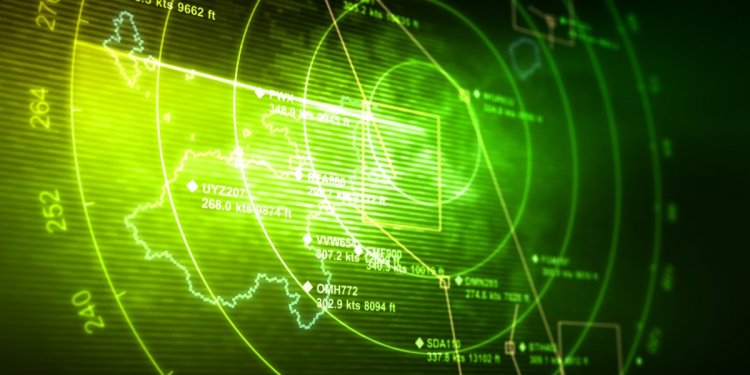
Air Traffic Control Systems
 THERE is a strange disconnection between the way lawmakers in America go about protecting the country's airline passengers on the ground, and the way they abandon them to their fate once they are airborne. Nothing is too much trouble when it is a question of stopping bombs, guns and bad guys getting on board. But that contrasts with the deaf ear turned to calls to make flying safer, cheaper and less arduous by dragging the country's creaking, 1960s-era air-traffic-control (ATC) system into the 2010s.
THERE is a strange disconnection between the way lawmakers in America go about protecting the country's airline passengers on the ground, and the way they abandon them to their fate once they are airborne. Nothing is too much trouble when it is a question of stopping bombs, guns and bad guys getting on board. But that contrasts with the deaf ear turned to calls to make flying safer, cheaper and less arduous by dragging the country's creaking, 1960s-era air-traffic-control (ATC) system into the 2010s.
Yet, such is what happened this summer when, before heading off for the beaches, Congress once again failed to address the question of how best to reform the Federal Aviation Administration (FAA). An authorisation bill, passed on July 13th (two days before the FAA’s legal authority expired), merely extended the agency's finance for another year and included measures to reduce the length of queues at security checkpoints, acquire more bomb-sniffing dogs, tighten vetting of airport employees and let surplus screening equipment to be donated to foreign airports. But it studiously ignored the bigger question of how to get the FAA’s “NextGen” modernisation plan, which would shift ATC from relying on ground-based radars to a system called Automatic Dependent Surveillance–Broadcast (ADS–B), which uses satellites and transponders to follow aircraft movements, back on track—and thus bring the country’s antiquated ATC system up to international standards.
In February, the House of Representatives' Transportation and Infrastructure Committee proposed the Aviation Innovation Reform and Reauthorisation Bill. This would spin the air-navigation service out of the FCC and turn it over to an independent, not-for-profit organisation (to be called the ATC Corporation) set up explicitly for the purpose. Instead of relying on an excise duty levied on fuel and air tickets, this independent corporation would be self-financing, using a sliding scale of fees paid by airlines and other users. With its own revenue, the corporation could then get on with installing ADS-B gear without having to fight Congress each year for an apppropriation. The bill, eminently sensible on the face of things, remains stalled in the House of Representatives, having failed to garner bipartisan support. One side sees it as a giveaway of public assets; the other has difficulty finding agreement amongst its own divisions.
Hiving off air navigation is not exactly a new idea. Over the past couple of decades more than 50 countries, including Australia, Britain, Canada and New Zealand, have privatised (or at least “commercialised”) their ATC services, freeing them to innovate and modernise without government interference. The International Civil Aviation Organisation, the UN agency that oversees worldwide aviation standards, has urged all 191 of its member countries to extricate their air-traffic control from government bureaucracy and political micromanagement—so they can manage the explosive growth in air travel with greater safety and effectiveness.
America remains the biggest holdout. It is not that its airlines have balked at the proposal. Practically all are on board. So, encouragingly, are the unions—which have reversed their position since ATC liberalisation was first mooted back in the 1980s. Insiders are aware that things simply cannot carry on as they are. The number of passengers flying around the world each year is expected to double, to 6.4 billion, by 2030. In America, this is happening as a staffing crisis threatens to bring the country’s ATC system to its knees. The FAA has missed its recruitment target for each of the past seven years. As a consequence, the number of certified air-traffic controllers (some 10, 600) is the lowest it has been in 27 years. Making matters worse, some 3, 000 of them are approaching retirement age.
Not all of America’s carriers think privatisation is the answer. Delta Air Lines has been particularly outspoken, arguing that it would raise costs and cause fares to rocket. Competitors, however, reckon Delta’s objection has more to do with the age of its aircraft, which would be expensive to fit with modern transponders. Private pilots have misgivings, too. The cost of fitting ADS-B units to their small planes would hit them hard. For the rest of the industry, though, NextGen cannot come soon enough. And if that means privatisation, so be it. Most have watched Nav Canada, the non-profit company that has managed air traffic across Canada and the North Atlantic, for the 20 years it has been in business. Despite Delta's fears, Nav Canada’s costs reportedly dropped 30% following privatisation. The FAA's costs amount to $450 per flight hour, while Nav Canada's are $340.
All of which is hardly surprising. America’s patchwork of ground-based radio stations and radars dates back to the Kennedy era. Planes are guided to their destinations in a series of zig-zags, as they fly from one control point to the next. It can take ground controllers up to half a minute to get a fix on a plane’s echo transponder. Then there is the time it takes—typically, around 12 seconds—for a radar dish to update a plane’s position. By the time the dish has completed a rotation, an aircraft may have moved a couple of miles. That is why planes are required to fly at least five miles apart while crossing the country. Also, because radar operates by line-of-sight, controllers can "lose" planes that are flying at low altitude or behind mountains. In an age when digital communications are instananeous and ubiquitous, controllers often have to pass along a plane’s location and other important details on strips of paper.
Planes equipped with ADS-B transponders, by contrast, get a precise location from GPS satellites. This information is encoded with data providing the aircraft’s flight number, speed, heading and any manoeuvre it is making. These data are then broadcast automatically every second to all ground stations and other aircraft within a 150-mile radius. By knowing at any instant exactly where they are relative to other aircraft in the sky, planes so equipped can travel closer together without fear of colliding. They can also take more direct routes to their destinations, instead of zig-zagging their way from one control tower to the next. That saves fuel and time, while minimising aerial congestion.
















